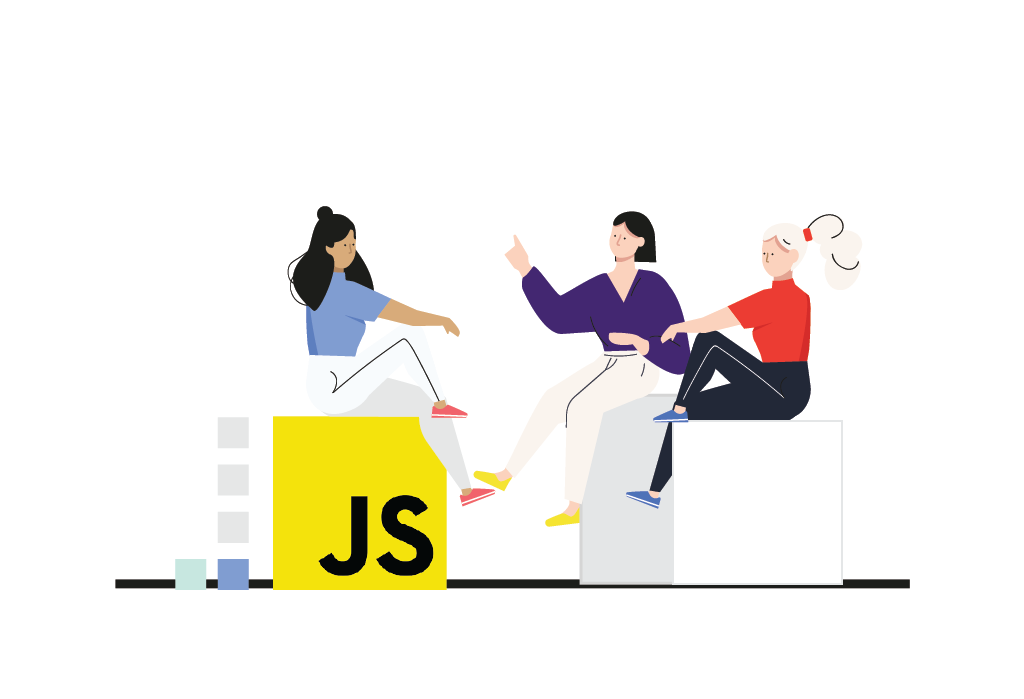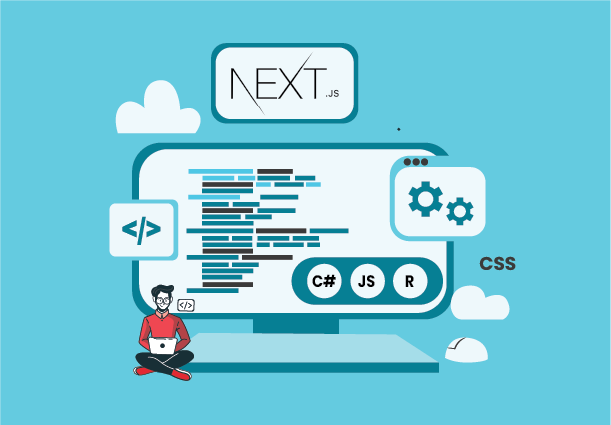JavaScript Framework Demystified: Understanding Its Essence
JavaScript, a dynamic and interpreted language, is known as the web’s essential language. It is a unique language that upholds an assortment of object-oriented, functional, and imperative programming paradigms. It is particularly appropriate for the web due to its lightweight architecture and is well known for its ability to dynamically add motion to static web pages. However, you can likewise create server-side applications utilizing JavaScript. JavaScript is used in a wide range of various applications in addition to web development, including desktop programs, mobile apps, and game creation. Regardless of being present for over 20 years, JavaScript has only lately emerged as a prevailing power in the field of computer languages. JavaScript is quickly ascending to the first spot on the list of languages utilized for creating server-side applications and websites because of its flexibility and simplicity. Since JavaScript is one of the many notable and sought-after languages in the IT sector, it has acquired prominence. Because of its ubiquity, different innovations, including toolkits, frameworks, libraries, and more have been made around the JavaScript ecosystem. You will be acquainted with the top JavaScript frameworks here, which give developers the building blocks they need to build applications. JavaScript frameworks have turned into the foundation of modern web development, offering developers the tools and structure expected to build robust, efficient, and dynamic web applications.
JavaScript is quickly ascending to the first spot on the list of languages utilized for creating server-side applications and websites because of its flexibility and simplicity. Since JavaScript is one of the many notable and sought-after languages in the IT sector, it has acquired prominence. Because of its ubiquity, different innovations, including toolkits, frameworks, libraries, and more have been made around the JavaScript ecosystem. You will be acquainted with the top JavaScript frameworks here, which give developers the building blocks they need to build applications. JavaScript frameworks have turned into the foundation of modern web development, offering developers the tools and structure expected to build robust, efficient, and dynamic web applications.
With the developing idea of web technologies and the interest in rich user encounters, it is significant to choose the right framework. Let’s dig into the best JavaScript UI frameworks that stand out, each contributing its exceptional features and benefits to the developer toolkit.
Charting the Peaks: Exploring the Top JavaScript Frameworks
Frameworks for JavaScript are utilized to smooth out and speed up the creation of online applications. They empower developers to deliver sophisticated applications more rapidly and successfully by giving them access to prewritten code and working frameworks.  The design of UIs, data administration, and server-side communication are only a couple of the activities that frameworks may perform. Overall, JavaScript frameworks let developers of all skill levels build websites more quickly and easily. One method for considering frameworks is as the real skeleton or structural base of a bigger component. This recommends that frameworks, especially JavaScript frameworks, act as the foundation for building things. JavaScript frameworks are like versatile JavaScript layouts with built-in functionality that might be utilized to assist the creation of an application. While handling immense amounts of data or trying to foster multifaceted UIs, this might be truly useful. Here are the top 10 javascript frameworks:
The design of UIs, data administration, and server-side communication are only a couple of the activities that frameworks may perform. Overall, JavaScript frameworks let developers of all skill levels build websites more quickly and easily. One method for considering frameworks is as the real skeleton or structural base of a bigger component. This recommends that frameworks, especially JavaScript frameworks, act as the foundation for building things. JavaScript frameworks are like versatile JavaScript layouts with built-in functionality that might be utilized to assist the creation of an application. While handling immense amounts of data or trying to foster multifaceted UIs, this might be truly useful. Here are the top 10 javascript frameworks:
React:
React, spearheaded by Facebook, remains a key part of contemporary web development. Its command can be credited to its shrewd component-based architecture that engages developers to take apart complex UIs into reusable modules, subsequently working on both the creation and maintenance phases of web applications. One of React’s highest accomplishments is its virtual DOM, a lightweight representation of the actual DOM, which empowers productive updates by specifically rendering only the important elements. This approach radically reduces rendering time, leading to improved execution and a smoother user experience. React’s sweeping ecosystem brags plenty of tools that improve capabilities, such as React Router for seamless navigation and Redux for sophisticated state management, guaranteeing the effective organization of perplexing applications.
Angular:
Angular, carefully maintained by Google, arises as an exhaustive framework eminent for its robust features tailored to large-scale application development. Among its trademark features is two-way data binding, a system that synchronizes changes between the view and the model without manual mediation, smoothing out the development process. Notably, Angular’s emphasis on dependency injection facilitates modular and maintainable code, a basic part of sustainable application architecture. Angular’s capacities stretch out to strong routing abilities, a crucial asset in making single-page applications that offer fluid and intelligent user encounters. Angular CLI, a command-line interface, works on development via automating essential tasks like testing and deployment, allowing developers to focus on development and functionality.
Vue.js:
Vue.js, valued for its amicable harmony between effortlessness and flexibility, offers an ever-evolving framework that takes care of a wide range of development needs. Its steady adoption approach grants developers to incorporate Vue.js gradually into existing projects or start afresh with its framework. The core of Vue.js lies in its reactivity framework, where information data naturally trigger updates in the DOM, making interfaces quickly responsive and locking in. Vue Router upgrades navigation inside applications, while the Vue CLI smoothes out project setup and management. This adaptable framework is particularly appealing to developers looking for a user-centric approach without the precarious learning curve associated with some other frameworks.
Ember.js:
Ember.js presents a complete toolbox for building web applications that flourish with conventions and consistency. This all-encompassing framework champions solid shows, directing developers through a normalized structure that advances consistency and simplicity of collaboration. The Ember CLI, a command-line interface, speeds up development through its automation of key tasks such as code generation, testing, and deployment, freeing developers from redundant tasks. Also, Ember Data becomes the overwhelming focus in taking care of data consistently, rendering it an apt decision for applications with complicated data models. The Ember.js approach is especially significant in bigger projects where the organized conventions add to code maintainability and robustness.
Svelte:
Svelte, a vanguard in web development, presents an innovative shift by modifying when most of the work is performed – from runtime to compile-time. Its compiler changes code into streamlined JavaScript during the build cycle, bringing about more leaner bundles that significantly bolster performance. Svelte’s reactivity framework directly refreshes the DOM upon data changes, guaranteeing instant responsiveness. This smoothed-out approach has reverberated with developers looking for effectiveness and speed. Its pivotal compilation process, combined with its simplicity and reactivity, makes Svelte a charming choice for those enthusiastic about optimizing performance without compromising on user experience.
Backbone.js:
Backbone.js remains as a deft framework that confers structure to web applications through its moderate approach. At its core, Backbone.js outfits developers with major building blocks – models, views, and routers – that work with the organization and management of application components. The models give an organized way to deal with data management, while views handle the delivering of UI components. Routers manage navigation, allowing developers to create single-page applications that offer consistent changes between various segments. Backbone.js’ charm lies in its simplicity and adaptability, taking care of the people who lean toward a level of independence in creating their architectural choices.
Deciphering Framework Dynamics: Selecting the Optimal Path for Your Project
The best JavaScript frameworks for front-end, back-end, and testing ought to be picked. It’s vital to remember that every framework could enjoy novel benefits and detriments, and what works for one venture probably won’t work for another.  Understanding the project’s necessities is essential prior to moving further, including the sort of application you need to build, your inclinations for usefulness, and your prerequisites for adaptability. The functionality, quality of community support, learning curve for your team, and ease of usage of the framework should next be considered.
Understanding the project’s necessities is essential prior to moving further, including the sort of application you need to build, your inclinations for usefulness, and your prerequisites for adaptability. The functionality, quality of community support, learning curve for your team, and ease of usage of the framework should next be considered.
A critical consideration is scaling testing, particularly on the off chance that you anticipate that your project should foster over the long haul. It’s additionally essential to contemplate any reconciliations you could need, like those with databases, APIs, or payment gateways, as well as if the framework you’re pondering offers the expected tools and plugins. Budget plan ought to likewise be considered. While some JavaScript frameworks are open-source and free, others could require a license. Prior to choosing a decision, it’s vital to consider your other options and balance the advantages and downsides of every framework completely.
It’s essential to take note of that there is no universally applicable solution for this issue, and the ideal framework for your project will at last depend on your specific requirements and specifications. It is fundamental to carefully gauge your other options and, whenever required, look for the direction of industry experts. It is encouraged to test your JavaScript-developed applications on a genuine device cloud to test them in real-world contexts, no matter what JavaScript framework you use.
Pattem Digital: Where JavaScript Frameworks Ascend with Distinction
Our business specializes in providing top-notch services using the best JavaScript framework for frontend, using the strength of state-of-the-art technology to make dynamic and cutting-edge web applications. Our team of talented specialists has broad knowledge of several JavaScript frameworks, including React, Angular, Vue.js, and others. Our fortes incorporate guaranteeing adaptability, improving performance, and delivering seamless user experiences. We enjoy staying on the bleeding edge of industry patterns, which empowers us to give clients with customized solutions that completely use JavaScript frameworks and produce viable digital products that entice both consumers and companies.





